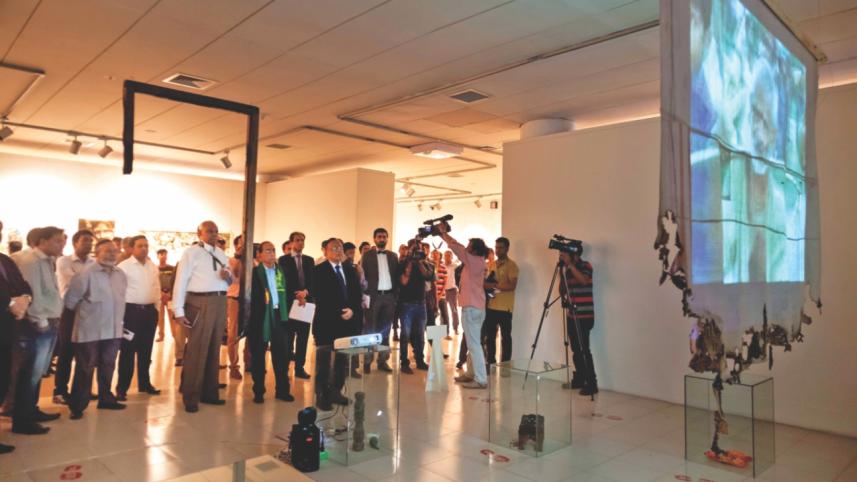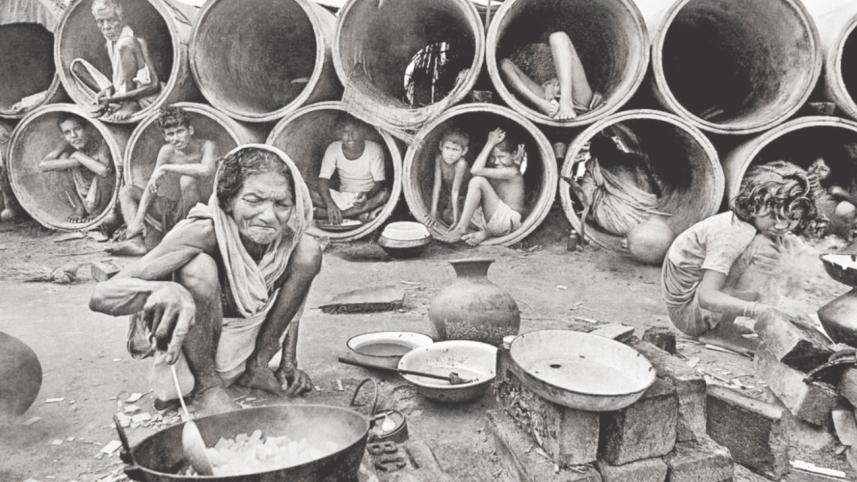A close look at the birth of Bangladesh

An in-depth, engaging multimedia exhibition on our Liberation War, titled “1971: Emergence of a Nation”, is currently on at the National Art Gallery of the Bangladesh Shilpakala Academy. Organised by the Ministry of Foreign Affairs and curated by Amitabh Dewry, the exhibit opened on March 19. Abul Hassan Mahmud Ali, Foreign Affairs Minister; HT Imam, Prime Minister's Political Advisor; Md. Shahriar Alam, State Minister for Foreign Affairs and Professor Dr. Bazlul Haque of the Department of International Business at Dhaka University were present at the inauguration.
The exhibition stands out in terms of its content, first up -- with an excellent balance of photos, rare documents, posters, an installation and audiovisuals, giving exhibition-goers a closer look at the background of the War, and many unknown facets of it. The exhibition is divided in 11 segments – commemorating the 11 sectors of the Liberation War. Labeled sequentially as Uprising, Billowy, Horrors, Refugee, Resistance, Fightback, War, Allies, Irreversible, Victory and Homecoming, the segments take the audience through the uprising of '69 and the subsequent landslide victory in the 1970 general election, on to Operation Searchlight and the genocide, to the happenings of the nine months that followed, closing with the Freedom Fighters' return and reception. The information is detailed and thorough, and the commendable research that has gone into the project is quite clear. Particularly two sections -- Refugees and Allies – have a greater focus in the exhibition. According to the curator, about 10 million people were displaced out of their country during the war and another 40 million were internally displaced, making it one of the biggest displacements of human history. The heart-wrenching conditions of the camps and the people's sufferings are brilliantly documented. The allies section also showcases some lesser-known stories: like the dock workers at USA's Baltimore who protested and prevented a war-ship from loading arms that were en route to Bangladesh for the Pakistan Army; the shoe-polishers of Mumbai working one whole day just to raise funds for refugees; or the French youth who attempted to hijack a plane and demanded ransom in the form of medical aid be sent to the war-torn zone. The diplomatic and humanitarian efforts by both general people and diplomats are also portrayed with care.

Curator Amitabh Dewry clarified his unusual choice of materials for the exhibition. “With the advent of technology, more than ever we now have access to new documents -- even classified ones, photographs and other evidence of what the Liberation War really was and what its impact was, so there is no space to create any confusion or controversy about it. The materials used – acrylic (for the photos) symbolises transparency, the wood symbolises strength and solidity of it, and the laser engraving of the captions on to the wood symbolizes how the War is engraved permanently in our hearts.”
“This exhibition is dedicated to the 50,000 children that died during the War,” Dewry added. “We always mention the number of martyrs and rape victims, but these children rarely come up in discussions. We decided to honour their memory through the exhibition.”
The exhibition remains open till tomorrow, from 3-8pm.



 For all latest news, follow The Daily Star's Google News channel.
For all latest news, follow The Daily Star's Google News channel.
Comments